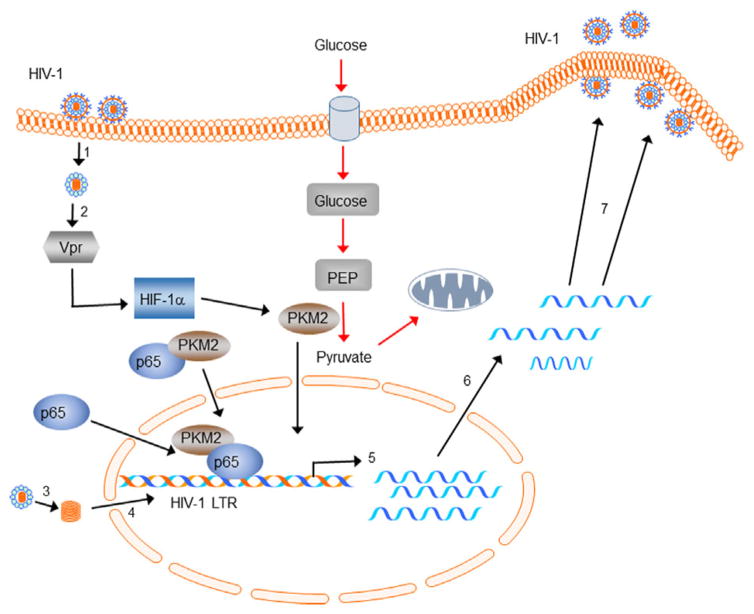Fig. 8.
Schematic representation of the non-metabolic role of PKM2 in HIV-1-infected macrophages. HIV-1 infection of monocyte/macrophages and virus entry and core release (step 1). Virion-associated Vpr (step 2) in an HIF-1α-dependent manner induces PKM2 (Barrero et al., 2013). Following reverse transcription, proviral DNA (step 3) is imported into the nucleus and integrated into the host genome (step 4). Viral infection or reactivation of integrated virus (latent infection) results in the induction and nuclear translocation of PKM2 and p65 independently from the cytoplasm or by forming a functional complex (p65/PKM2) in the cytoplasm and subsequent nuclear translocation. p65/PKM2 interacts with the kB sites on HIV-1 LTR and synergistically activates transcription (step 5). Fully spliced mRNAs and partially spliced and unspliced RNAs are then transported to the cytoplasm and translated (step 6). Unspliced RNA is transported to the cell membrane, where Env, Gag, and Gag-Pol polyproteins assemble and incorporates into new virus particles (step 7). The new virus particle is then released after maturation.

